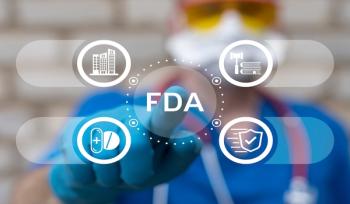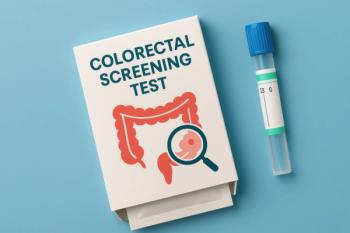
Corticosteroids vs Noncorticosteroids in Pediatric Dermatology: Challenges and Considerations
Challenges in choosing between corticosteroids and noncorticosteroids for pediatric dermatologic conditions include balancing efficacy, safety, compliance, and long-term management while considering the specific needs and risks of each child.
Treating
While corticosteroids are known for their rapid effectiveness, concerns about adverse effects and long-term safety often limit their use, particularly in younger patients. On the other hand, noncorticosteroids offer a safer profile for extended treatment but may not deliver the same immediate relief, leading to potential issues with compliance and overall treatment satisfaction.
Therefore, it is important to explore the complexities of choosing between corticosteroids and noncorticosteroids in pediatric dermatology and to highlight the key factors that influence this critical decision-making process.
Efficacy and Safety
When it comes to efficacy, topical steroids are commonly used as treatment for pediatric dermatologic conditions due to their potent anti-inflammatory and immunosuppressive properties.1 However, this potency comes with significant safety concerns. Systemic corticosteroids can cause a wide range of adverse effects in pediatric patients, both in the short- and long-term.
“They can include high blood pressure, high blood sugars, or risk of
On the other hand, noncorticosteroids may offer a safer alternative, particularly for long-term use but may be less immediately effective in controlling severe symptoms. Some of these prescription treatments contain active or synthetic vitamin D3, a vitamin A derivative, or anthralin.3 In July, the FDA approved roflumilast cream 0.15% (Zorvye; Arcutis Biotherapeutics) for the treatment of mild to moderate
Age Appropriateness
Potency and duration of corticosteroid use must be carefully considered, especially in infants and young children. One of the most significant concerns with systemic corticosteroids in children is the potential to cause growth delays. Chronic use can suppress growth, making it a critical factor in deciding whether to initiate or continue steroid therapy. However, untreated inflammatory conditions can also stunt growth, so the decision to use corticosteroids must balance these risks.2
Additionally, discontinuation of corticosteroids can lead to rebound symptoms and flares. It can also increase the risk of adrenal suppression.
“The best way to avoid it is to not need as much steroids, but if you need steroids, you can't avoid it,” Miller said. “I think what's more important is recognizing it and knowing and being able to have a backup plan of stress dose steroids for times of illness, so that families are armed with everything they need if their child is sick, and they've been on steroids and they have adrenal suppression.”
Cost and Accessibility
Corticosteroids are generally more affordable and widely available. Newer noncorticosteroid options can be significantly more expensive, which may limit access, especially in resource-limited settings. Prednisone is a common corticosteroid used to treat patients with
On the other hand, the average retail price for roflumilast is $1043.42 and $1772.13 for tapinarof (Vtama), according to GoodRx.6-7
To combat the high costs associated with noncorticosteroids, the Zoryve Direct Program was launched as a patient support initiative to assist with navigating the payer process and offers a savings card to help reduce out-of-pocket costs for eligible patients with commercial insurance. Additionally, the Arcutis Cares patient assistance program provides the medication at no cost for financially eligible patients who are uninsured or underinsured.8
Patient and Parental Compliance
Fear of adverse effects (steroid phobia) can lead to underuse or non-compliance. Some parents may be hesitant to use them, leading to suboptimal treatment outcomes. One study revealed that a significant number of parents of children with atopic dermatitis exhibited considerable anxiety about using topical corticosteroids, impacting treatment adherence and the child’s overall quality of life. With nearly two-thirds of parents showing a substantial fear of topical corticosteroids, the findings underscore the need for targeted education and support from health care providers.9
A session that took place during the
The session also covered the difficulties in ensuring that children are taking their treatment, whether it be through a syrup, a pill, or an injection, as children may avoid taking a syrup that doesn’t taste good or receiving an injection that hurts, apart from not knowing how to swallow the pill on their own. This is where topical therapies, an easier type of medication to deliver, can come into play.
During the session, Nnenna G. Agim, MD, FAAD, from North Dallas Dermatology Associates, concluded that although the costs of these topical treatments are high right now, the longer that they stay in the market, the more competition will both drive costs down and encourage coverage of these treatments. These newer therapies are crucial for the continued treatment of skin conditions like atopic dermatitis, vitiligo, psoriasis, and acne, among others. Having these as an option allows for flexibility and more varied methods of approaching treatment for each condition.
Key Takeaways
The use of systemic corticosteroids in pediatric patients is a complex decision that requires careful consideration of both the potential benefits and the risks of significant adverse effects. While these medications can be highly effective in managing a range of inflammatory and autoimmune conditions, their impact on growth, bone health, and overall development cannot be overlooked.
It is essential to balance the need for immediate symptom relief with the long-term health of the child, using the lowest effective dose for the shortest possible duration. Educating parents about these risks, closely monitoring the patient, and having a plan for managing potential complications like adrenal suppression are critical components of safe and effective corticosteroid therapy in children. Ultimately, the goal is to achieve disease control in a way that minimizes harm, ensuring that treatment decisions are always guided by the best interests of the child’s overall health and development.
References
1. Topical steroids for psoriasis. National Psoriasis Foundation. October 8, 2020. Accessed August 8, 2024.
2. Jeremias S. Dr Jennifer Miller outlines challenges of corticosteroid use in pediatric skin conditions. AJMC. Published July 12, 2024. Accessed August 8, 2024.
3. Non-steroidal topical treatments. National Psoriasis Foundation. November 22, 2023. Accessed August 8, 2024.
4. McComirck, B. FDA approves roflumilast for patients 6 years and older with atopic dermatitis. AJMC. Published July 9, 2024. Accessed August 8, 2024.
5. Prednisone. GoodRx. Accessed August 8, 2024.
6. Roflumilast. GoodRx. Accessed August 8, 2024.
7. Vtama (tapinarof): Uses, side effects, dosage & reviews. GoodRx. Accessed August 8, 2024.
8. Buchanan L. Roflumilast cream 0.15% for atopic dermatitis now commercially available. Dermatology Times®. Published July 29, 2024. Accessed August 8, 2024.
9. Albogami MF, AlJomaie MS, Almarri SS, et al. Topical corticosteroid phobia among parents of children with atopic dermatitis (eczema)- A cross-sectional study. Patient Prefer Adherence. 2023;17:2761-2772. Published online November 2, 2023. Accessed August 8, 2024. doi:10.2147/PPA.S43171910
10. Bonavitacola J. Ways to use nonsteroidal topical therapies in the treatment of skin conditions. AJMC. Published July 14, 2024. Accessed August 8, 2024.
Newsletter
Stay ahead of policy, cost, and value—subscribe to AJMC for expert insights at the intersection of clinical care and health economics.













































